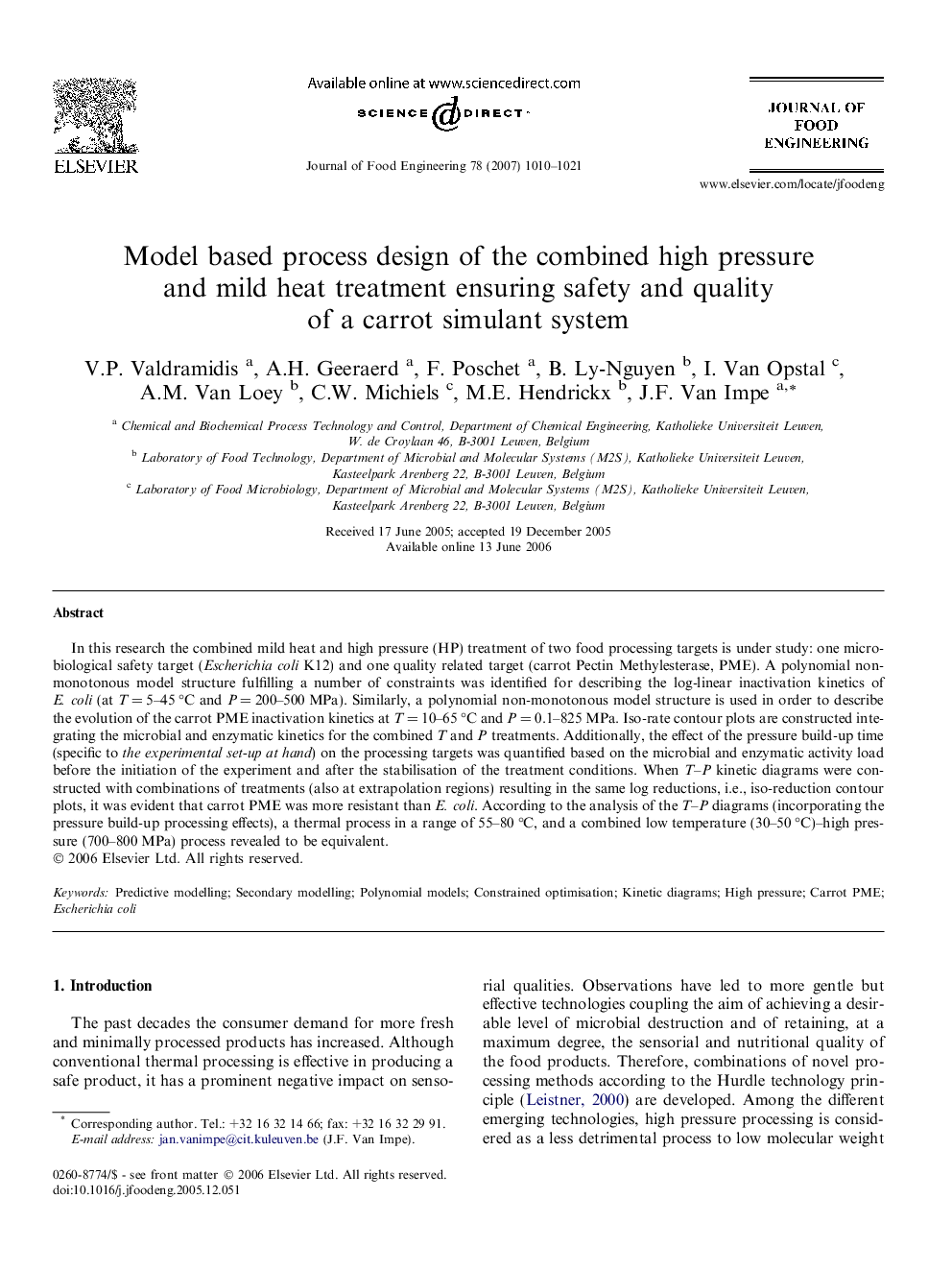| Article ID | Journal | Published Year | Pages | File Type |
|---|---|---|---|---|
| 225924 | Journal of Food Engineering | 2007 | 12 Pages |
In this research the combined mild heat and high pressure (HP) treatment of two food processing targets is under study: one microbiological safety target (Escherichia coli K12) and one quality related target (carrot Pectin Methylesterase, PME). A polynomial non-monotonous model structure fulfilling a number of constraints was identified for describing the log-linear inactivation kinetics of E. coli (at T = 5–45 °C and P = 200–500 MPa). Similarly, a polynomial non-monotonous model structure is used in order to describe the evolution of the carrot PME inactivation kinetics at T = 10–65 °C and P = 0.1–825 MPa. Iso-rate contour plots are constructed integrating the microbial and enzymatic kinetics for the combined T and P treatments. Additionally, the effect of the pressure build-up time (specific to the experimental set-up at hand) on the processing targets was quantified based on the microbial and enzymatic activity load before the initiation of the experiment and after the stabilisation of the treatment conditions. When T–P kinetic diagrams were constructed with combinations of treatments (also at extrapolation regions) resulting in the same log reductions, i.e., iso-reduction contour plots, it was evident that carrot PME was more resistant than E. coli. According to the analysis of the T–P diagrams (incorporating the pressure build-up processing effects), a thermal process in a range of 55–80 °C, and a combined low temperature (30–50 °C)–high pressure (700–800 MPa) process revealed to be equivalent.
